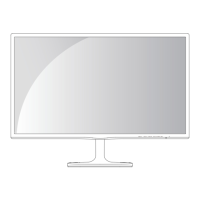
Do you have a question about the LG 24MP48HQP and is the answer not in the manual?
Critical components require manufacturer-specified replacements to ensure safety.
Guidelines for safely handling the LCD module to prevent damage.
Essential safety and procedural guidelines for servicing the monitor.
Techniques to protect sensitive components from static electricity damage.
Best practices for soldering electronic components safely and effectively.
Step-by-step instructions for replacing ICs, transistors, diodes, fuses, and resistors.
Methods for repairing damaged copper patterns on printed circuit boards.
Comprehensive technical details including model, features, and connectivity.
Physical dimensions, weight, and packaging information for the monitor.
Details on viewing angle, luminance, contrast ratio, and color coordinates.
Technical data on sync types, resolutions, input voltage, and power consumption.
MTBF, altitude, and On-Screen Display menu structure and language options.
Characteristics of the LCD module and active display area dimensions.
Information regarding EDID protocol for interface communication.
Detailed timing chart for various video signals and resolutions.
List of preset video modes compatible with the HDMI input.
Defines the coverage, appointment, and sequence for monitor adjustments.
Steps for calibrating color coordinates and luminance levels.
Verifying operational modes, quality standards, and specific diagnostic checks.
Instructions for RJ-45 input, writing DDC EDID, and shipping condition verification.
Criteria and procedures for manual and automated equipment adjustments.
Details on patterns used for adjustment and essential confirmation tests.
A schematic illustrating the main hardware components and their interconnections.
Step-by-step guide to diagnose and resolve issues related to the monitor not powering on.
Diagnostic procedures for screen display issues where no image or OSD appears.
Troubleshooting steps for Dynamic Power Management (DPM) issues with waveform analysis.
